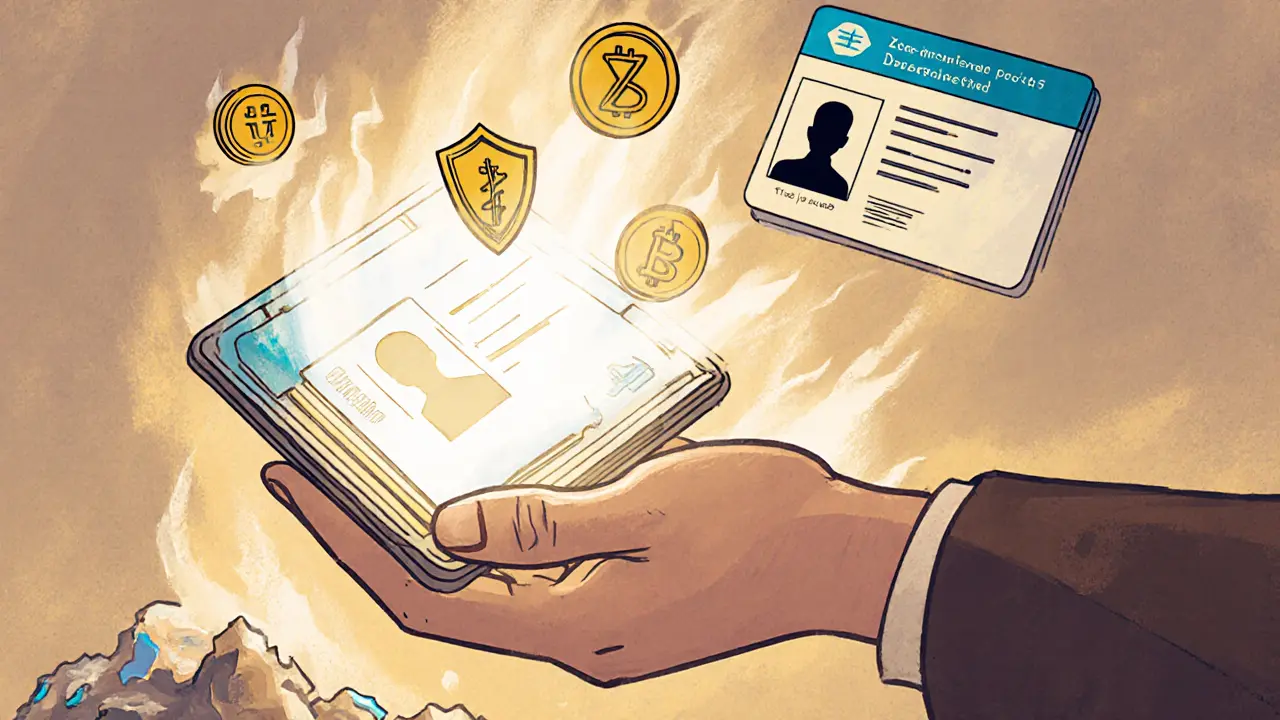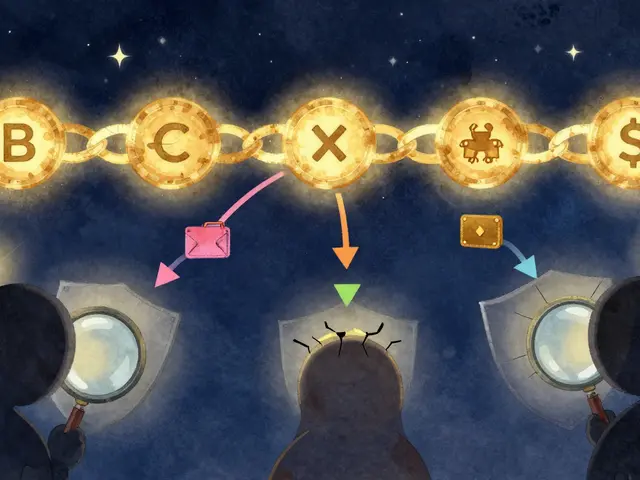Blockchain Identity Explained
When working with blockchain identity, the digital representation of a person or entity that lives on a distributed ledger. Also known as on-chain identity, it lets users prove ownership, reputation, and credentials without a central authority.
One of the biggest shifts driving this trend is self‑sovereign identity, a model where individuals own and control their personal data. Instead of handing your info to a KYC provider, you keep it in a wallet and share only what’s needed. This approach powers many of the airdrop guides on our site – you can claim a token by signing a message that proves you own a specific address, no passport required.
Behind the scenes, decentralized identifiers (DIDs), unique strings that link a user to cryptographic keys on a blockchain act as the technical backbone. A DID looks like did:polygon:0x123… and can be attached to a profile, a reputation score, or a credential. When a DeFi platform checks your eligibility for a liquidity‑mining reward, it queries the DID instead of searching a database.
Security is another piece of the puzzle. Multisig wallets, wallets that require multiple signatures to approve a transaction are essential for safeguarding high‑value identities, especially in DAO treasuries. A DAO that stores voting power on‑chain will often lock the treasury behind a Gnosis Safe multisig, ensuring no single actor can hijack the funds or the identity linked to them.
These building blocks intersect with many topics we cover. For example, the "VersE token airdrop" article shows how a verified blockchain identity can protect you from phishing scams. The "Top crypto mining‑friendly countries 2025" piece highlights jurisdictions that recognize on‑chain identity for tax reporting. Even the "VPN crypto Iran" guide notes how regulators try to tie IP addresses to blockchain accounts, making robust identity solutions crucial.
Beyond compliance, blockchain identity fuels new experiences. NFT marketplaces now verify collections by checking the creator’s DID and the contract’s provenance. This reduces fake drops and gives collectors confidence. Similarly, decentralized finance apps use DIDs to streamline KYC, letting you unlock higher borrowing limits once you’ve proven your wallet’s history.
In practice, building a strong blockchain identity starts with a secure wallet, registering a DID on a reputable network, and optionally linking it to a multisig for extra protection. From there, you can participate in airdrops, claim DeFi rewards, or even prove your credentials for a job in the crypto space without exposing personal data.
Below you’ll find a curated list of articles that dive deeper into each of these aspects – from airdrop safety checks to DAO treasury best practices – giving you actionable steps to strengthen your on‑chain presence.
Privacy-Preserving Identity Verification: How Blockchain Keeps Your Data Safe
Privacy-preserving identity verification uses blockchain and cryptography to prove who you are without revealing your personal data. Learn how zero-knowledge proofs and decentralized IDs are replacing traditional ID checks.
Decentralized Identity 2025: Trends, Tech, and Market Outlook
Explore the 2025 state and future of decentralized identity, covering tech, adoption, benefits, challenges, and implementation steps for enterprises.






